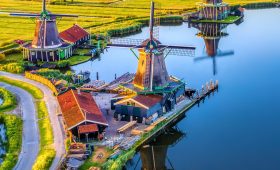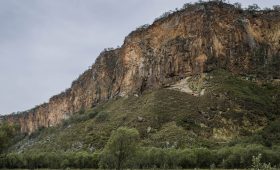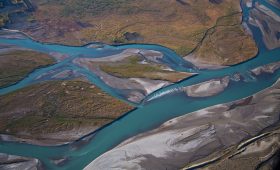Exploring the Falémé River: A Journey Through Mali and Senegal
The Unique Appeal of the Falémé River
The Falémé River, stretching approximately 650 kilometers, flows through the landscapes of Mali and Senegal. Originating in the Fouta Djallon highlands, this river offers a unique blend of natural beauty and cultural richness. Here’s what makes the Falémé River a destination worth exploring:
Stunning Natural Landscape
The Falémé River is characterized by its diverse ecosystems, including lush forests and the occasional waterfall. The river’s banks are dotted with bushes and greenery, providing a serene escape from urban life. However, it’s important to note that the river’s flow is highly seasonal. The West African Monsoon brings heavy rains from May to October, with August being the wettest month. This means the river is most vibrant in September, while the dry season from December to June sees reduced flow.
Cultural and Historical Significance
The Falémé River region is home to communities that have maintained their cultural traditions for generations. Visitors can engage with local villagers, participate in traditional ceremonies, and enjoy regional cuisine. Additionally, the area is known for its mining activities, with iron ore deposits and a recent gold rush near Diabougou, Senegal, close to the Mali border. This adds an intriguing layer of economic and historical context to the region.
Optimal Visiting Period
For those planning a trip, the best time to visit the Falémé River is during the dry season, from November to March. This period offers pleasant weather and safer travel conditions. The rainy season, from June to September, can lead to flooding and make some areas difficult to access.
Traveling to the Falémé River
Reaching the Falémé River requires some planning, but the journey is rewarding. Here are your options:
By Air
The nearest major airport is in Bamako, Mali’s capital. From there, travelers can arrange for ground transportation to the river. Hiring a private car or joining a guided tour are viable options for reaching the river.
By Road
Traveling by road offers a more adventurous route. The highways leading to the Falémé River provide scenic views of the countryside. However, some roads can be challenging, so hiring a local driver familiar with the terrain is advisable.
Local Transportation Options
Once at the Falémé River, exploring the area requires local transportation. Here are some options:
River Boats
The river is navigable, and boat tours offer a unique perspective of the region. These tours provide opportunities to visit nearby villages and observe local life along the riverbanks.
Local Guides
Hiring a local guide can enhance your experience. Guides offer insights into the area’s history, culture, and natural wonders, ensuring a more enriching visit.
Key Facts
- The Falémé River spans approximately 650 kilometers through Mali and Senegal.
- The river’s flow is seasonal, with peak flow in September and minimal flow from December to June.
- The region is known for its iron ore deposits and a recent gold rush near the Mali-Senegal border.
- The best time to visit is during the dry season, from November to March.
- Travel options include flying to Bamako and traveling by road, with local transportation available via river boats and guides.
The Falémé River offers a distinctive travel experience, combining natural beauty with cultural depth. While the journey requires some effort, the insights and experiences gained make it a worthwhile adventure.




